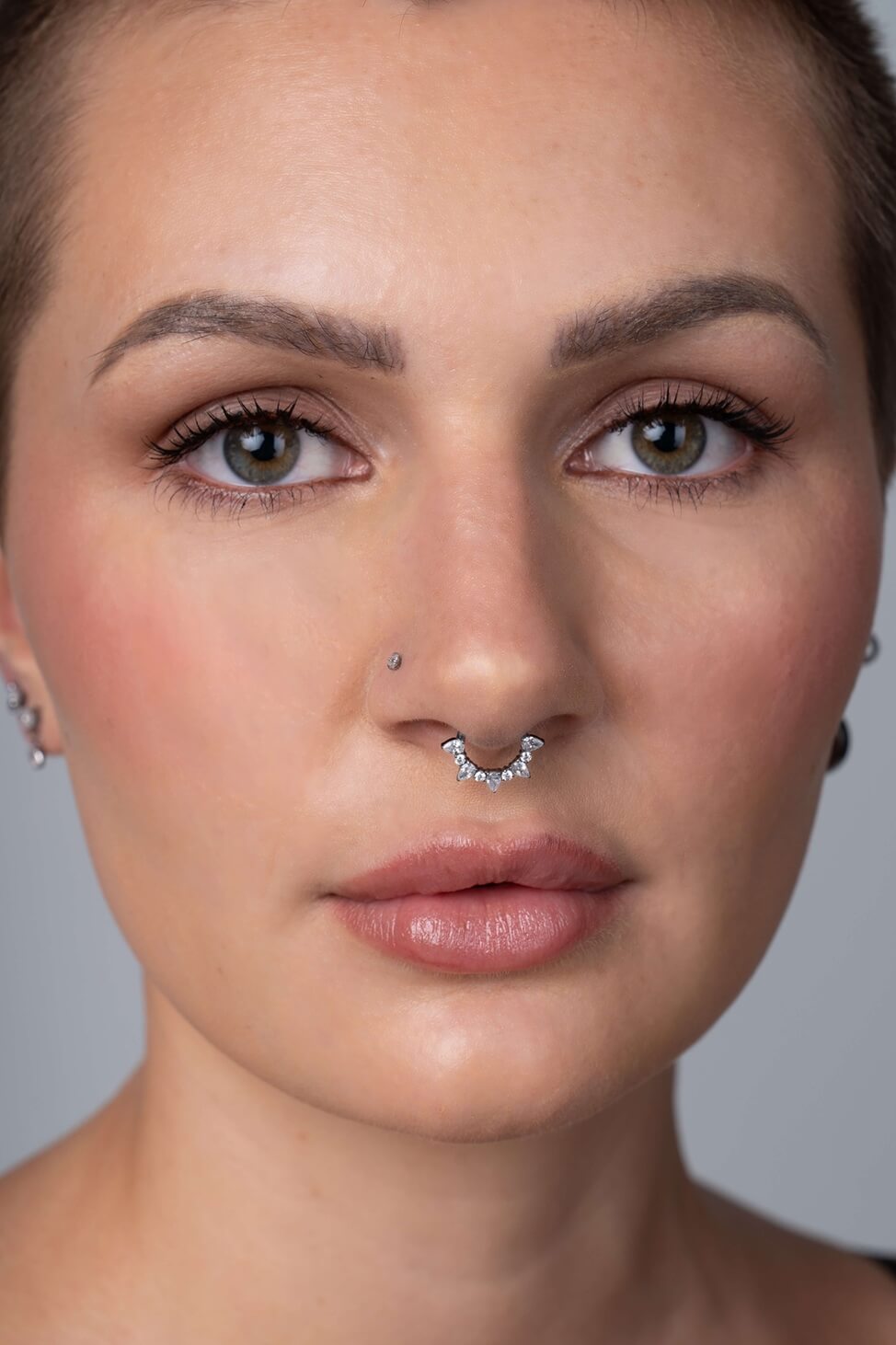Why downsize your piercing?
Why it matters.
Downsizing is a normal and important part of the healing process. It keeps your piercing comfortable, reduces irritation, and helps ensure it heals beautifully. Think of it as the final step in setting your piercing up for long-term success.
What is a downsize?
Getting a new piercing is such a fun experience, and there's a lot to know about the healing process. When you first get pierced, your new piercing will boast a slightly longer sterile piece of jewellery. It's normal for ears and other anatomy to swell after they've been pierced and having a longer piece of jewellery in place will minimise the risk of complications.
Once this swelling has subsided and the pierced area returns to normal, your jewellery can be switched to one that is a shorter, sterile piece of jewellery - this is what we call a sterile downsize. It is important not to go to small too quickly and to avoid changing jewellery yourself until the piercing has fully healed.

How do I know if my post needs to be downsized?
There are several tell-tale signs that your jewellery may need to be downsized:
- Irritation - Longer jewellery can create irritation leading to friction bumps if left in too long. If you're prone to developing piercing bumps, you should have your piercing downsized at the appropriate time.
- Snagging on clothes and hair - Not only is this super uncomfortable, but accidental snags can cause damage to your piercing and potentially lead to piercing bumps and swelling.
- Discomfort - Sometimes the longer jewellery can create discomfort when left in for a long period of time or may lead to a piercing "dropping" and healing at an angle, this is why downsizing at the correct time is a crucial part of healing.
- Aesthetics - Well-fitted jewellery is not only important for promoting healing, but it looks great too! As your swelling subsides, more of the bar will become exposed, so it's another reason to have your jewellery downsized at the right time.
When should I downsize my piercing?
This will vary from piercing to piercing and person to person, but generally most facial, ear and body piercings should be downsized from a minimum of 6-8 weeks, while oral piercings can usually be downsized from 2-4 weeks.
Some piercings such as a Daith, Nipple or Industrial generally take a little longer to heal and for swelling to subside, so 8-10 weeks is an appropriate timeframe to downsize these.
Some piercings that may not require a downsize are "needle-free" lobe piercings, nostril piercings performed with nose twist jewellery, dermals and surface piercings. However! it is always important to monitor your piercings for excessive swelling, embedding of the jewellery, redness or irritation, ensure earring backings are clicked all the way back, and come back to see your piercing professional if you have any concerns.

Can you give me a shorter post at the time of the piercing instead?
We want to provide the safest piercing experience possible and want you to be able to enjoy your piercing for years to come. Using jewellery that does not allow for initial swelling can lead to significant issues with healing, embedding, and even infection. For these reasons, we start every needle piercing with a slightly longer piece of jewellery.
Can I downsize my piercing myself?
Because your piercing is not fully healed at the time of your downsize it's important to only use sterile jewellery. For this reason, we recommend coming in to have your jewellery downsized by our piercing professionals.
Does downsizing a piercing hurt?
Having your jewellery downsized will feel just like switching out your earrings. At the most, you may feel a tiny amount of discomfort, but nothing should be painful. The best way to ensure a smooth and pain-free downsizing appointment is to carefully maintain your piercing aftercare regime.
The SkinKandy standard.
Every downsize at SkinKandy comes with:
- Expert piercers trained to industry-leading standards
- Safe, sterile jewellery designed for healing
- Free in-house check-ups and aftercare support
Downsizing is always performed in-store by our piercing pros using pre-sterilised jewellery.
Book Downsizing
Ready for style upgrades?
Once your piercing is fully healed, it’s time to have fun with your look. Explore our range of Fashion Jewellery for healed piercings.














